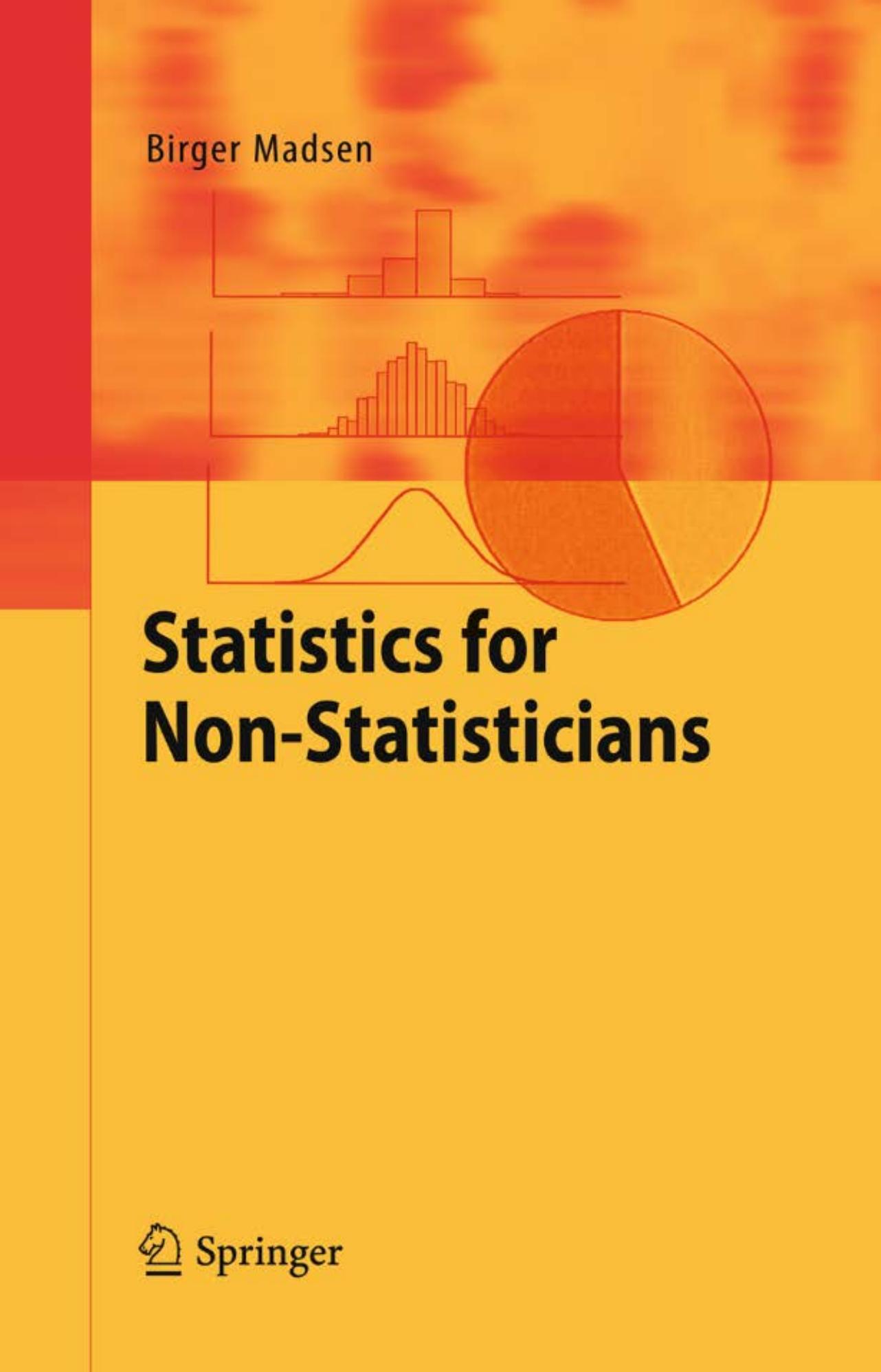Statistics for Non-Statisticians by Birger Madsen

Author:Birger Madsen
Language: eng
Format: epub, pdf
Publisher: Springer Berlin Heidelberg, Berlin, Heidelberg
.
It is clear from the figure that as long as p is not too close to 0 or 1 (for example, if p is somewhere in the interval from 0.2â=â20% to 0.8â=â80%), the statistical uncertainty is roughly the same as when pâ=â0.5.
In other words:
The relative statistical uncertainty is u/p; this number gets larger, the smaller p is, see Fig. 5.5 which is still based on a sample size of nâ=â100
Fig. 5.5Relative statistical uncertainty
.
When the relative frequency approaches 0, the relative statistical uncertainty can get infinitely large.
This can be translated to the opinion polls: The largest political parties, which come close to 50%, have the largest statistical uncertainty. In contrast, the smallest political parties have the largest relative statistical uncertainty.
It appears from the formula that the statistical uncertainty u is inversely proportional to the square root of the sample size n. For example, if the sample gets four times larger, the statistical uncertainty is halved. Conversely, if the sample gets four times smaller, the statistical uncertainty is doubled.
This is illustrated in Fig. 5.6, which shows the statistical uncertainty vs. n, where pâ=â0.5. In other words, this is the maximum statistical uncertainty for a given sample size
Fig. 5.6Statistical uncertainty vs. n
Download
Statistics for Non-Statisticians by Birger Madsen.pdf
This site does not store any files on its server. We only index and link to content provided by other sites. Please contact the content providers to delete copyright contents if any and email us, we'll remove relevant links or contents immediately.
| Applied | Geometry & Topology |
| History | Infinity |
| Mathematical Analysis | Matrices |
| Number Systems | Popular & Elementary |
| Pure Mathematics | Reference |
| Research | Study & Teaching |
| Transformations | Trigonometry |
Modelling of Convective Heat and Mass Transfer in Rotating Flows by Igor V. Shevchuk(6349)
Weapons of Math Destruction by Cathy O'Neil(6075)
Factfulness: Ten Reasons We're Wrong About the World – and Why Things Are Better Than You Think by Hans Rosling(4618)
Descartes' Error by Antonio Damasio(3183)
A Mind For Numbers: How to Excel at Math and Science (Even If You Flunked Algebra) by Barbara Oakley(3179)
Factfulness_Ten Reasons We're Wrong About the World_and Why Things Are Better Than You Think by Hans Rosling(3157)
TCP IP by Todd Lammle(3093)
Applied Predictive Modeling by Max Kuhn & Kjell Johnson(2975)
Fooled by Randomness: The Hidden Role of Chance in Life and in the Markets by Nassim Nicholas Taleb(2964)
The Tyranny of Metrics by Jerry Z. Muller(2950)
The Book of Numbers by Peter Bentley(2872)
The Great Unknown by Marcus du Sautoy(2609)
Once Upon an Algorithm by Martin Erwig(2537)
Easy Algebra Step-by-Step by Sandra Luna McCune(2535)
Lady Luck by Kristen Ashley(2493)
Practical Guide To Principal Component Methods in R (Multivariate Analysis Book 2) by Alboukadel Kassambara(2444)
Police Exams Prep 2018-2019 by Kaplan Test Prep(2438)
All Things Reconsidered by Bill Thompson III(2325)
Linear Time-Invariant Systems, Behaviors and Modules by Ulrich Oberst & Martin Scheicher & Ingrid Scheicher(2301)
